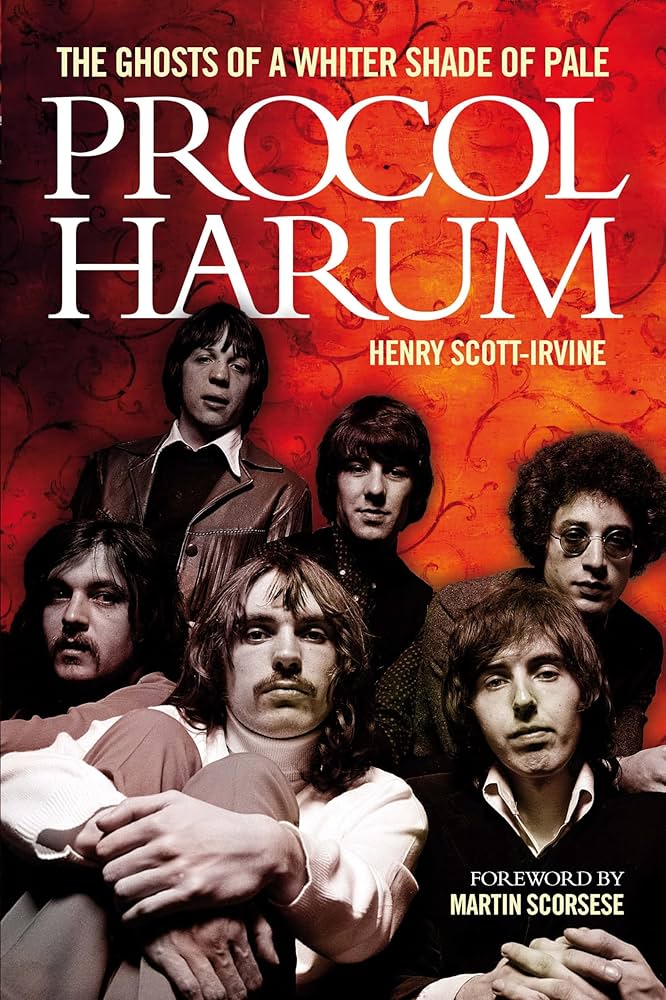About the Song
“A Whiter Shade of Pale” by Procol Harum is one of the most enigmatic and influential songs in the history of rock music. Released in 1967, the song became an instant classic and is often hailed as a hallmark of the psychedelic era. Combining elements of classical music, blues, and progressive rock, it is a mesmerizing piece that captivated listeners with its haunting melody, poetic lyrics, and intricate musical composition.
The song opens with an unforgettable organ riff played by Matthew Fisher, whose Baroque-inspired melodies set the tone for the entire track. The organ creates a deep, atmospheric sound that evokes a sense of mystery and drama. The use of classical influences, particularly the organ’s sweeping tones, gives the song a timeless quality, blending contemporary rock with the grandeur of classical music. This melding of genres was ahead of its time and set Procol Harum apart from other bands of the era.
Lyrically, “A Whiter Shade of Pale” is filled with vivid, surreal imagery that has led to much speculation and interpretation over the years. The lyrics, penned by Gary Brooker and Keith Reid, are abstract and open to interpretation, with references to themes of love, loss, and the passage of time. The line “We skipped the light fandango / Turned cartwheels ‘cross the floor” evokes a sense of carefree abandon, while the repeated refrain, “A whiter shade of pale,” suggests a feeling of fading, emotional exhaustion, or spiritual emptiness. The song’s lyrics don’t tell a linear story, but rather evoke moods and feelings, which is part of what makes it so compelling and universally relatable.
Gary Brooker’s vocal delivery is another standout feature of the song. His voice is deep, soulful, and rich with emotion, perfectly complementing the song’s melancholy atmosphere. His phrasing is measured, giving the lyrics an almost mournful, reflective quality. He carries the listener through the mysterious world created by the song’s imagery, his voice an instrument in itself that adds to the song’s emotional depth.
The song’s arrangement is lush and layered, with the prominent organ providing a continuous, sweeping backdrop. The rhythm section, led by B.J. Wilson on drums, creates a steady, almost hypnotic pulse, while the bassline adds depth and warmth to the composition. Procol Harum’s musicianship is evident throughout, as the band blends rock, classical, and even jazz elements into a seamless whole. The song’s unique structure, with its gradual build-up and shifting dynamics, reflects the changing emotional landscape of the lyrics.
“A Whiter Shade of Pale” was a massive commercial success, reaching number one on the UK Singles Chart and becoming a top ten hit in the United States. It became an anthem of the 1960s counterculture, often associated with the psychedelic movement, although its sophisticated sound transcended the genre. Its popularity has endured through the decades, and it remains a staple on classic rock radio and in popular culture.
The song’s impact goes beyond its initial success. It has been covered and referenced by numerous artists and has been used in films, television shows, and commercials, cementing its place in the canon of timeless rock music. It’s a song that has continued to inspire listeners, with its haunting melody and ambiguous lyrics prompting new interpretations and emotional responses with each generation.
“A Whiter Shade of Pale” is a song that encapsulates the spirit of the 1960s while remaining a unique and singular piece of music. Its combination of classical influence, progressive rock, and poetic, evocative lyrics make it one of the most iconic songs of its time. Procol Harum created a track that not only defines an era but also continues to resonate deeply with listeners, inviting them to explore its many layers and interpretations.
Video
Lyrics: “A Whiter Shade Of Pale”
We skipped the light fandango
Turned cartwheels ‘cross the floor
I was feeling kind of seasick
But the crowd called out for more
The room was humming harder
As the ceiling flew away
When we called out for another drink
The waiter brought a tray
And so it was that later
As the miller told his tale
That her face, at first just ghostly
Turned a whiter shade of pale
She said, “There is no reason
And the truth is plain to see”
But I wandered through my playing cards
And would not let her be
One of sixteen vestal virgins
Who were leaving for the coast
And although my eyes were open
They might just as well have been closed
And so it was that later
As the miller told his tale
That her face, at first just ghostly
Turned a whiter shade of pale
And so it was that later
As the miller told his tale…
Post navigation
Puppet On A String – Sandie Shaw The Letter – The Box Tops